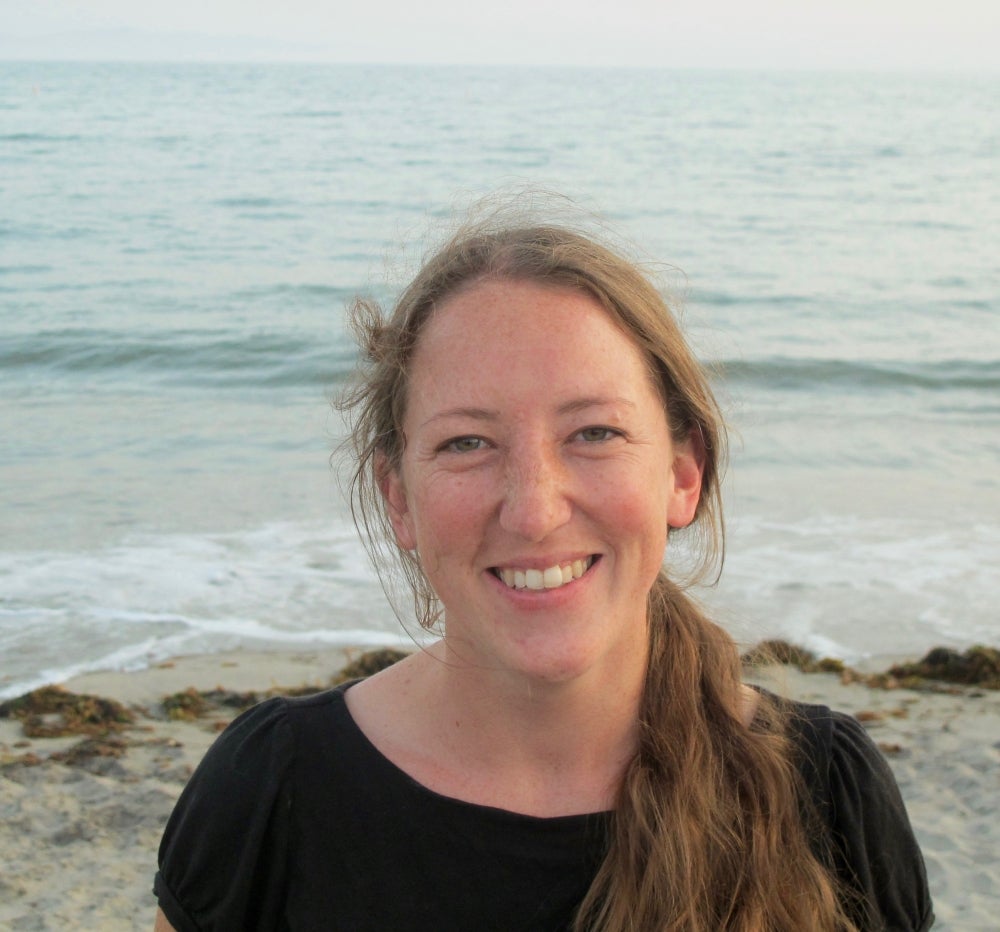
Oil Platforms’ Fishy Future

Biologists and fishermen alike know that offshore oil platforms function as de facto habitats for fish. The structures climb hundreds of feet into the water column, creating a prefab reef out in open water. But many of these platforms will soon be decommissioned, and government agencies are considering the potential ecological effects in deciding how this will be done.
UC Santa Barbara postdoctoral scholar Erin Meyer-Gutbrod and her colleagues have focused their research on predicting how different decommissioning scenarios will affect the productivity of the surrounding waters. They found that completely removing a platform could reduce fish biomass at the sites by 95% on average. Meanwhile, removing just the top of the rig could keep losses to around 10%. Their forecast appears in the journal Ecological Applications.
“The key result of the paper is that the biomass and production on the platforms are much higher than they would be if the structure were removed and the area reverted to soft bottom,” Meyer-Gutbrod said.
The state of California is currently weighing several possibilities for decommissioning 27 oil platforms off the coast. The three main options at each site: leave the platform in place, remove all of it, or remove the top part of it. Each possibility has its own economic and ecological effects.
The research team set out to study the size and composition of fish communities at 24 platforms and predict how they might change under the three decommissioning scenarios. They used visual survey and bottom-trawl data on the biomass and composition of fishes living within the platforms’ underwater structure, or jacket, and the nearby soft bottom. They divided each platform vertically by habitat type, starting with the mound of shells that accumulates on the seafloor below and rising up the jacket based on the position of all the major horizontal beams.
With data in hand, Meyer-Gutbrod used mathematical models to predict how each of the decommissioning scenarios would affect biological productivity. For partial removal, she assumed that all structures within 26 meters of the surface would be stripped, as this would eliminate the need for a lighted buoy to mark the location as per U.S. Coast Guard guidelines.
The researchers found that completely removing the platform would result in an average loss of 96% of the fish biomass across all 24 sites surveyed. Meanwhile, removing just the top 26 meters resulted in a loss of only 10% of the fish biomass. Meyer-Gutbrod pointed out that this varied considerably between locations, since the jackets are in different places and depths with different fish communities. They forecasted no losses resulting from partial removal on five of the platforms and up to 44% of losses on one, Platform Gina, which sits in only 29 meters of water.
According to the researchers’ models, leaving the underwater structure of all 24 sites in place would support slightly more than 29,000 kg of fish biomass. With the top 26 meters removed, these sites could support just shy of 28,000 kg. And if all 24 platforms were completely removed, the reestablished soft bottom habitats would support about 500 kg of fish biomass.
“This result was not particularly surprising,” Meyer-Gutbrod said, “however, it was very important to demonstrate it in a rigorous way.”
The analysis revealed that fish densities were highest near the base of the jacket. The team also found that the community of fish species observed on soft bottom habitats was very different from the species congregating around platforms. This was among the first studies to specifically consider the new community that would reestablish on the soft seafloor if all of a platform’s structure were to be removed.
“In short, partial removal does not result in much loss of fish biomass or production since most of the structure sits below 26 meters of water, and fish densities tend to be higher at the platform base and shell mound than in the midwater,” Meyer-Gutbrod said.
The results are a conservative estimate of the impact the different scenarios could have on the wildlife in the area, according to Meyer-Gutbrod. “Our models only account for fish found under the platform or ‘inside of the structure,’” she said. However, the halo of marine life extends beyond the confines of a platform’s submerged jacket, well into the surrounding waters. This implies that the removal of more structure would have a larger overall effect than reported in the study.
As California weighs how to decommission the oil platforms that sit off its coast, studies like this will be critical to informing those decisions. “The people living near the Santa Barbara Channel are highly invested in the marine ecosystems here, and there is a wide range of perspectives and interest in these habitats,” Meyer-Gutbrod said. “Our goal was to provide some predictions of what these sites might look like to help guide these impending decisions.”
The study, sponsored by the Bureau of Ocean Energy Management, also gives the federal government important information in the decision-making process for future decommissioning of oil and gas platforms.
Research Biologist Bob Miller, who also was involved in the study, said, “Ultimately the decision on what to do with decommissioned platforms will be a value judgment. Our study gives some objective information that will hopefully help the stakeholders come to the best decision for people and the marine environment.”



